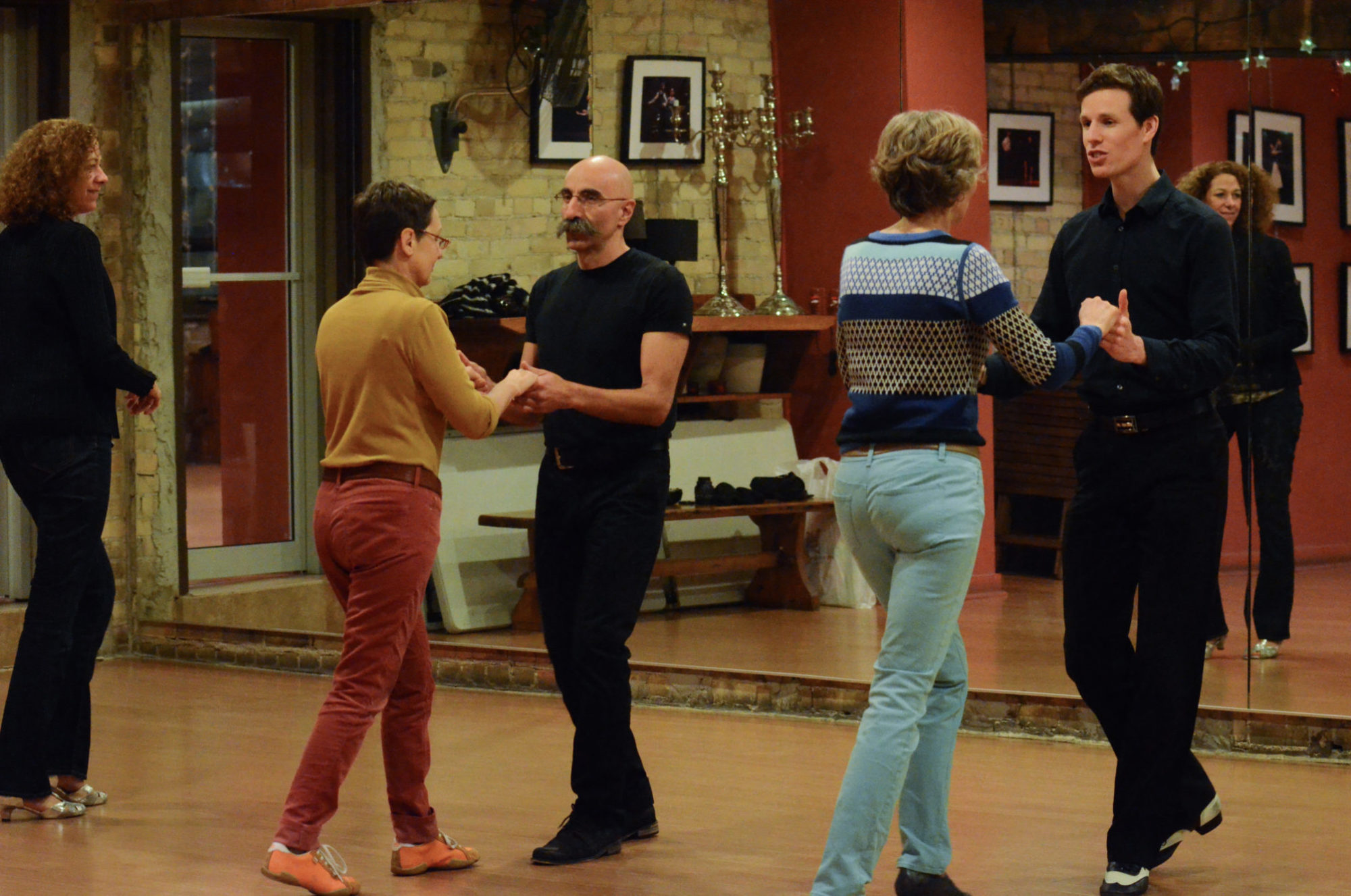Now that we know a few things about stretching safely and efficiently, let’s look at some great stretches we can use to build flexibility and reduce our chances of injury.
Legs and Feet
 Seriously consider buying a yoga mat. Or some of the stretches below will make your knees look like you’ve been practicing for the 100m baby crawl.
Seriously consider buying a yoga mat. Or some of the stretches below will make your knees look like you’ve been practicing for the 100m baby crawl.
Ankles absorb every step we take, doubly so when coming down from a lift or jump. Make sure you’re leaning forward on a support, with one leg behind you and a straight supporting leg. Then, bend the knee, then straighten. This won’t feel like much of a stretch, because it’s increasing your range of motion, not pulling on a muscle.
The Iliotibial (IT) band is one of the most important muscles to stretch, as it is used constantly for turnout and Cuban motion. If the above stretch isn’t strong enough, try to lower the chest down to the knee.
These muscles work together for all kinds of pushing-off actions, and well as good floor connection and jumps. Use the instep stretch to avoid a nasty charley-horse halfway through your routine.
Hips
Like the IT band, hip flexors easily get tight through Latin hip action. Taking the position above, squeeze the glute (butt) muscles and push the hips forward, sinking into the knee as you do. Repeat with the other leg.
The glutes play an important role in pelvis placement and hip motion. Getting on all fours, rest the RF just above the calf. Stretch by sitting back on the leg, keeping the spine straight. Return to starting position and switch legs.
These muscles are used every time we make snappy closing or crossing movements. This one is great, because it lets gravity do the work of stretching for you.
 Muscles are most vulnerable when they are being stretched - never flex them, but use other muscles to exit the stretch, by rolling over for instance.
Muscles are most vulnerable when they are being stretched - never flex them, but use other muscles to exit the stretch, by rolling over for instance.
Chest, Back and Arms
The deltas are the powerhouse of the shoulders, and ballroom frame keeps them working constantly. Pull the arm across the chest (figure 1), or down and across the back (figure 2), to target different areas of the muscle. Careful not to apply much pressure on the backward pull.
Keeping our chest open and relaxed is essential for a good frame. The goal is to reach as far forward as you can without any part of your upper body loosing contact with the floor.
If you’re tall (like me) and/or tend to stick your butt out when dancing, your lower back needs to be stretched out more. Get into the above position by lying on your side with left knee under right hand as shown, then raising the other hand up in the air and letting gravity carry it down to the side. Do both sides.
 Try to do your stretches in the morning, as our muscles shrink again when we sleep. Besides, it’s a great way to prep your body and mind for the day.
Try to do your stretches in the morning, as our muscles shrink again when we sleep. Besides, it’s a great way to prep your body and mind for the day.
I’ve included a bonus video for a full routine of dance-related stretches (see below). If a stretch doesn’t feel right, search online or talk to a trainer for an alternative that hits the same spots. Everyone wants to dance for life - take care of your body, and you can make it happen!

Very thorough article. I am totally opposite. Played sports all my life, danced full time for the last 14 years. Never stretched. No injuries. I always listen to my body. Always start slow, gentle, and go from there.
Well said – I suspect some people are more structurally sound then others, and can get away with less stretching. It’s certainly true that you can sometimes avoid injury for quite a long time if you listen to your body instead of ‘pushing through the pain’, like most do.